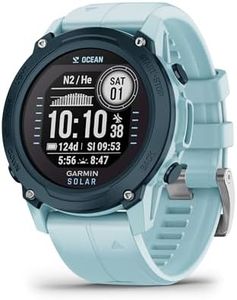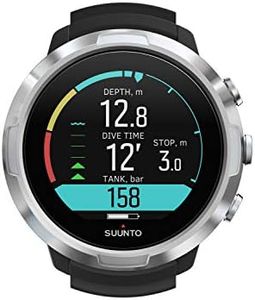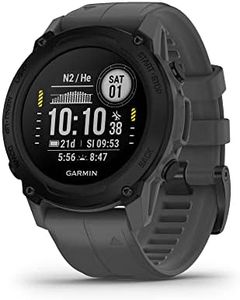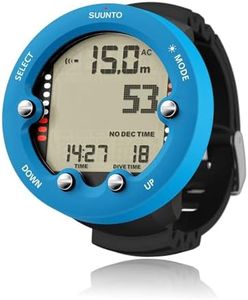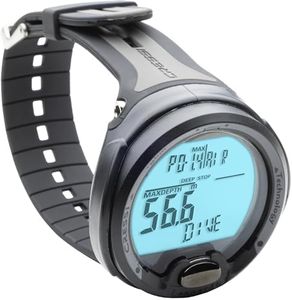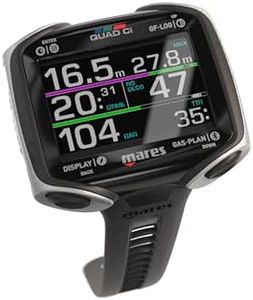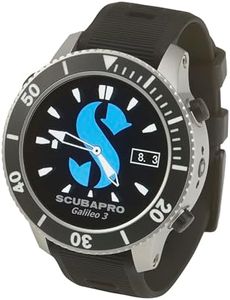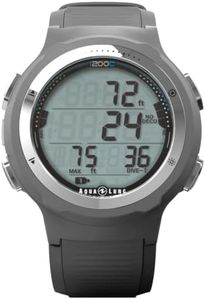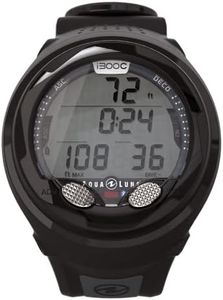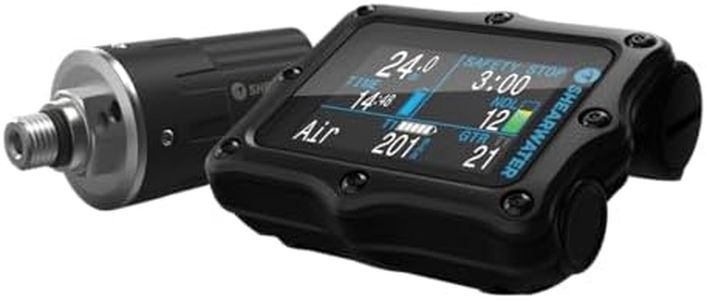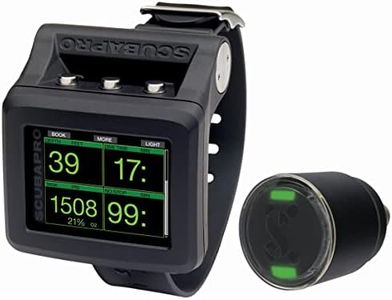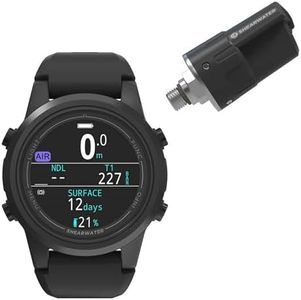We Use CookiesWe use cookies to enhance the security, performance,
functionality and for analytical and promotional activities. By continuing to browse this site you
are agreeing to our privacy policy
10 Best Diver Computers
From leading brands and best sellers available on the web.By clicking on a link to a third party's website, log data is shared with that third party.
Buying Guide for the Best Diver Computers
Choosing a diver computer is an important decision for any diver, whether you are a beginner or more advanced. A diver computer helps you keep track of crucial information underwater such as depth, time, and decompression limits to make your dive safer and more enjoyable. To pick the best model for your needs, it’s important to understand which features will provide the best support for the kind of diving you plan on doing. Consider the environments you’ll be in, how often you’ll dive, and how comfortable you are with technology to guide your choices.Display Type and ReadabilityDisplay type refers to how information is shown on the diver computer, such as through a basic segment LCD, a dot-matrix LCD, or a bright color screen. This is important because clear information is essential for safety underwater, especially in low-visibility or deep dives. Generally, segment LCDs are more basic and can be harder to read but offer longer battery life, while color displays are clearer and offer more data at a glance but tend to consume more power. If you mostly dive in clear, shallow water and prefer simplicity, a basic screen may suffice. If you plan on night dives, deeper explorations, or want quick glances at your data, a color or high-contrast display can be much more helpful.
Dive Modes SupportedDive modes refer to the different settings a computer can offer, such as air, nitrox, gauge, freediving, or trimix modes. This feature matters because each type of diving requires tracking slightly different data for safety and planning. For example, if you only ever plan on recreational dives with standard air, you only need an air mode. However, if you want the flexibility for advanced dives, such as using enriched air (nitrox) or venturing into technical/trmix options, make sure the computer supports those modes. Decide based on your current and future diving ambitions.
Algorithm and Conservatism SettingsThe algorithm in a dive computer determines how it calculates decompression limits and ascent rates according to safe diving practices. Conservatism settings let you adjust how cautious the device should be when determining these limits. This is vital for safe diving, as different people, dive profiles, or conditions (like cold water) may increase your risk of decompression sickness. Some computers let you choose more conservative or aggressive settings. If you are new or tend to dive in challenging environments, a more conservative approach is safer. Experienced divers sometimes appreciate the ability to fine-tune these settings for complex or repetitive dives.
User Replaceable BatteryBattery type refers to whether you can replace the battery yourself or need to send the computer to a shop. Diver computers are often sealed for waterproofing, so battery changes can be tricky. A user-replaceable battery is more convenient for those who travel or do many dives, so you aren’t left without a computer due to a dead battery. If you don’t dive frequently, non-user-replaceable batteries that last a long time might be fine. Frequent divers often prefer user-replaceable types for peace of mind.
Connectivity and Data LoggingConnectivity deals with whether your dive computer can connect to your phone, tablet, or computer to upload and view your dive logs digitally. Data logging helps you track your past dives, which is useful for learning and planning your future dives. Some diver computers require manual logbooks, while others can wirelessly sync using Bluetooth or USB. If you like keeping digital records or want to review your dive performance, choose a model with reliable connectivity. If you prefer pen-and-paper, this might not be essential.
Size, Strap, and ComfortSize and comfort matter because you’ll be wearing the diver computer on every dive, sometimes with thick gloves or a wetsuit. Larger computers with big buttons and screens are easier to operate underwater but may be bulkier. Smaller, watch-style models are convenient for daily wear but can be harder to read with gloves. Think about what gear you’ll be using (like drysuits or gloves) and how much you mind a larger device on your wrist. Pick what feels easiest to check and operate in your typical diving conditions.
Nitrox CapabilityNitrox refers to breathing gas with extra oxygen, which many recreational divers use for longer, safer dives. Having nitrox capability is important if you plan to get certified or want to dive with nitrox in the future. If you only ever dive with standard air, you might not need this feature, but having it offers more flexibility without adding much complexity.
